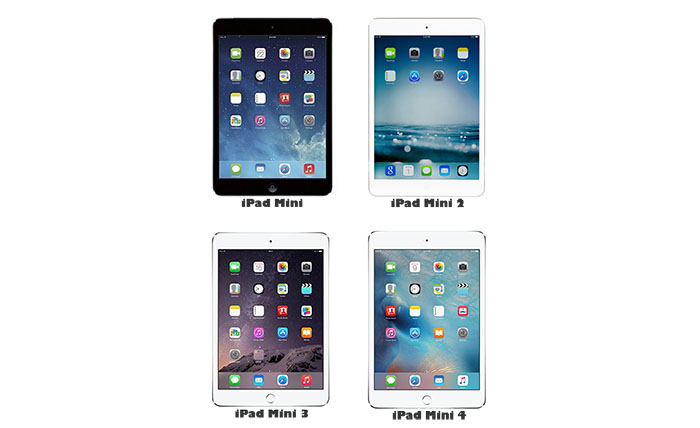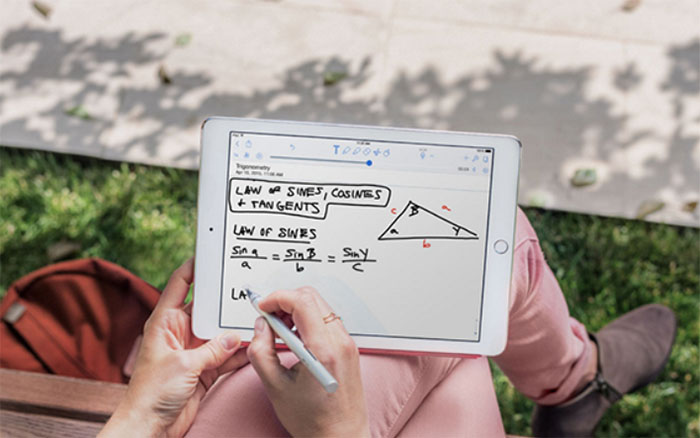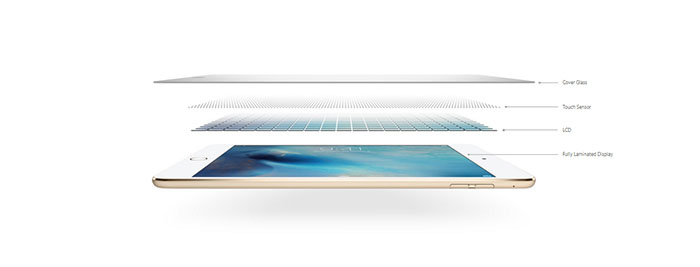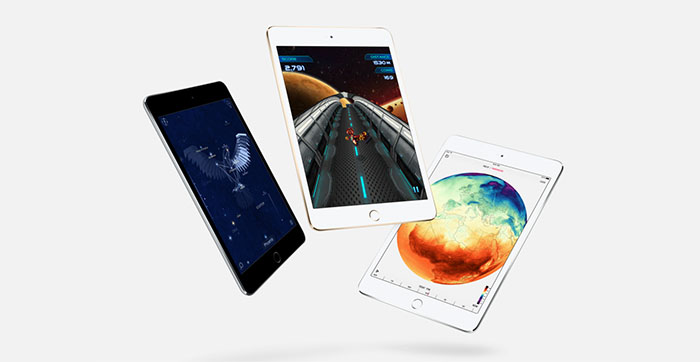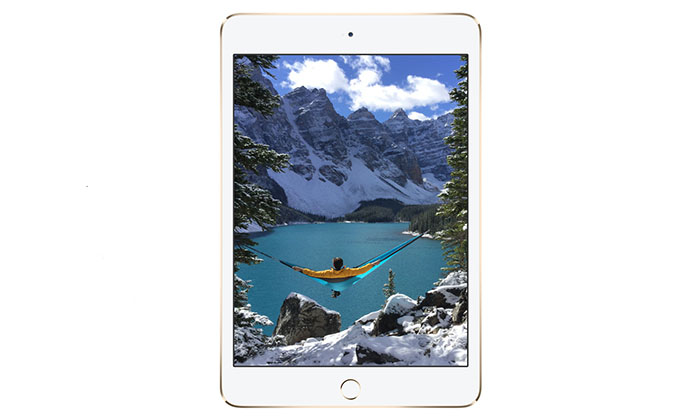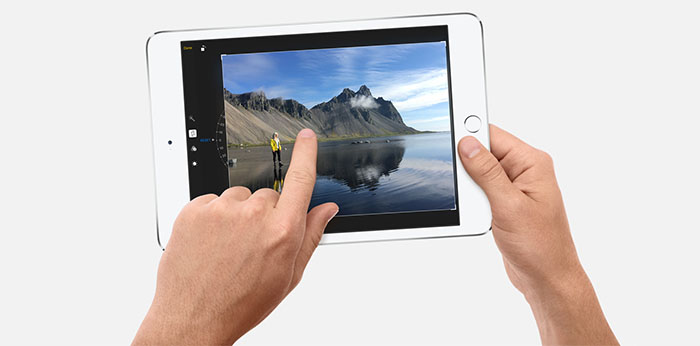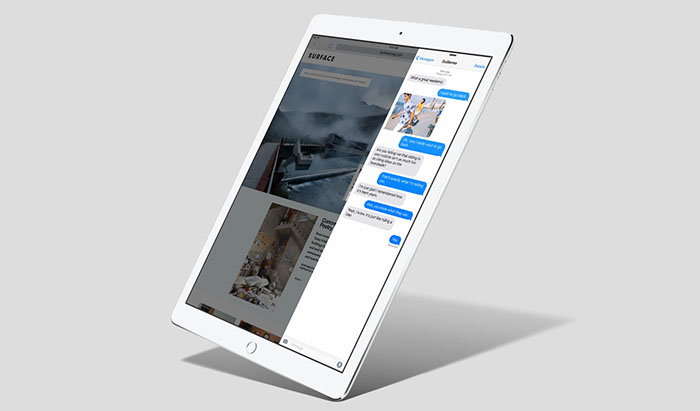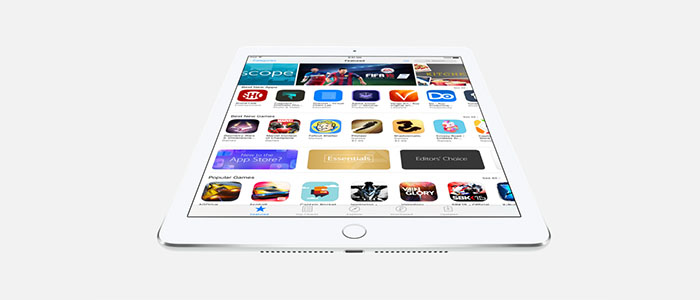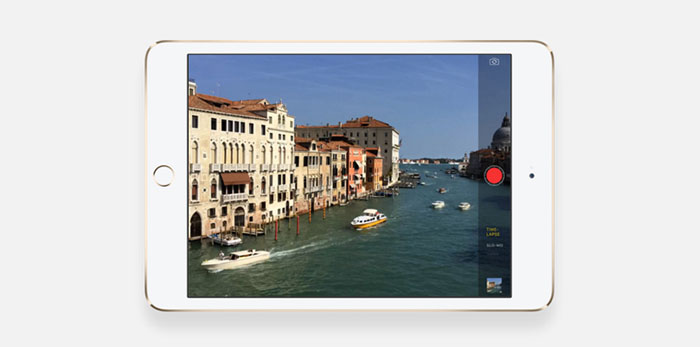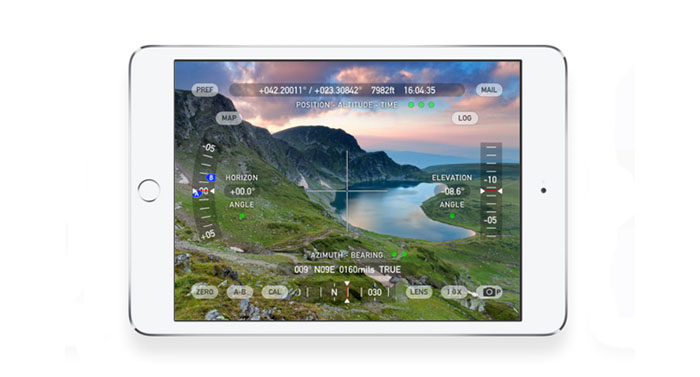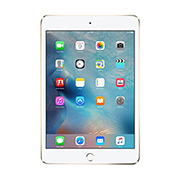| Apple iPad Mini 4 | |
|---|---|
| Amazon.com | Check Offer |
Over the years, Apple has dominated the tablet market and very few were considered real competitors until more high-end Android devices started to roll out (like the Samsung Galaxy Tab series). iPads were and still are quite popular and the first iPad was the first successful tablet on the market (this says a lot about the trust the Apple Company gained around the world).
You could hardly believe it’s been only 5 years since the initial iPad came out, since there a lot of variations, shapes and sizes. It spans from the initial iPad, iPad 2 and iPad Mini to iPad Pro, iPad Mini 4 and iPad Air Two (all three released this year). So, yes, you have a large variety to choose from and what we are going to focus is the most portable series, the iPad Mini tablets.
The first generation of iPad Mini was received with positive reviews, most critics applauded the new size, design and applications. Following the success of the first Mini, the second generation, the iPad Mini 2 was also received rather well by the public, especially because it featured the anticipated Retina Display. But it was criticised for being thicker and heavier than its predecessor.
The third generation was received rather poorly. It basically was the same iPad Mini 2 but with the addition of Touch ID technology and a new gold colour available for the case. So, it is reasonable that some of us received the news of a new, better iPad Mini 4 with a bit of skepticism, especially since the announcement was done quickly and easily missable.
After we had a look at the Mini 4, we saw that Apple has actually made a lot of improvements and most of us agree that this should have been the last year’s iPad Mini. But enough with history and regrets, let’s see what the new iPad Mini 4 has in store for us this year.
Design
If you ever had an iPad Mini, know that it hasn’t changed that much, the design being similar with its predecessors and also, is basically a smaller version of the new iPad Air 2.
This isn’t a bad thing. The case feels and looks premium, with an aluminium body that meets the full glass front creating an uninterrupted swiping experience. This is possible thanks to the chamfered edges at the end of the glass front. Although we liked the feeling and it looks nice, the edges are prone to scratching and it reduces the tablet’s drop resistance.
We really liked the metal and glass construction, especially because the back panel feels sturdy and it has a ceramic-like feel. We’ve seen how a plastic back panel can make a tablet more lightweight and therefore more maneuverable (on the Samsung Galaxy Tab S2), but how heavy and how big is the iPad Mini 4?
Well, you’ll be glad to know that comparing to the Mini 3, the new tablet has lost some weight and is less thicker, measuring 8.0×5.3×0.24 inches and weighing only 10.4 ounces. It’s not as light or as slim as the Galaxy Tab S2 and this will be noticeable when held in one hand, but comparing it with its predecessors, it’s a lot easier to use for longer periods of time.
But, as you can see, the Mini 4 is a bit taller and wider, so if you planed to use the same covers as from the last three Mini series, it won’t perfectly fit the new tablet (the magnets aren’t firmly sealed and the case felt loose, it just doesn’t fit).
Note: The iPad Mini 4 is available in silver, space grey and gold.
Just like said before, the front of the iPad Mini 4 is entirely made of glass, with a single circular button at the bottom (which also doubles as a fingerprint scanner) and the front-facing camera at the top.
The glass used on the front of the Mini 4 has anti-glaring treatment that makes the screen a lot more readable (more even than on the iPad Air 2). Something new that you will notice immediate is the lack of the Mute/Rotation button from the side, the only way to access this option now being through the Control Centre inside the iOS menu.
The side buttons are similarly located as on the iPad Air 2, we have the volume controller less prominent and inside a little depression on the top right side, the Power button is also less prominent but easy to find, located on the top edge, along with the 3.5mm headphone jack. At the bottom edge, rests the Lighting port and two speaker grills.
The sound quality is not extraordinary and we didn’t expect it to be, but Apple could have put a bit more work into this section. And that’s not all, when you play games in landscape mode you will often block the speakers with your hand, so yes, they didn’t really think this through.
So, overall, the new Mini 4 has an elegant design, it’s more lightweight and therefore more comfortable to hold (it is also quite similar to the iPad Air 2), so if you like a well built tablet with a premium design, the iPad Mini 4 is the device you were searching for.
Display
iPad Mini 4 features a 7.9-inch IPS LCD Led-backlit display, with a 2048×1536 resolution, 16 million colours and a pixel density of 324 ppi. The pixel density is similar to what Samsung Galaxy Tab S2 offers and comparing it with the iPad Air 2, while the former has more screen, the Mini 4 features, without a doubt, the best pixel density.
But don’t get over-excited, colours are a bit less accurate and details weren’t as rich when comparing it with iPad Air 2, although the difference isn’t drastic, the displays are similar to a certain degree. An interesting change is the removal of a tiny air gap between the display and the glass, combining them into a single laminated piece.
This was indeed a good decision from Apple because the screen now has less glare and it features better viewing angles. This has also improved the viewing experience, colours are richer and more vivid, making the images seem closer to your fingertips.
As usual, the Retina display delivers great visuals, Apple claiming it has full coverage of the sRGB colour gamut. We measured around 99% of the sRGB colour gamut and that’s a really awesome result.
So, what if we’re at the beach and want to see a movie while bathing in the sun? No problem, the iPad Mini 4 is a lot brighter (brighter than the Air 2), reaching up to 412 nits, and because the display has little to no glare, reading a book or watching a movie under direct sunlight will be a pleasant experience.
The Mini 4 has high black levels, although not the deep blacks from the Galaxy Tab S2’s AMOLED, grayscale accuracy is incredible, extremely high degree of colour accuracy (virtually any colour within the sRGB gamut).
So what more can we say, it’s a really well done display, there are some improvements from the last Mini versions, images look great, but there’s always room for improvements (Android tablets are going really strong and offer a tough competition).
Performance
Performance-wise, the iPad Mini 4 is a strong performer. It has an Apple A8 64-bit chipset (as used on the iPhone 6 and 6 Plus; the Air 2 uses a better A8x chip and 6S uses an A9), featuring a dual-core Typhoon CPU clocked at 1.5GHz.
Furthermore, there is a capable PowerVR GX6450 quad-core GPU, backed by 2GB RAM (1GB more than on the iPAD Mini 3, but Apple is still shy with added RAM) and 16, 64 or 128 GB internal storage. Unfortunately, there is no microSD card slot (an usual choice, though a wrong one) and the 16GB version are not enough, you will run out of space in no time.
There are some hardware differences if you compare it with the iPad Air 2, there are different generations of SoCs, the GPU is less powerful on the Mini 4 and you will soon figure it out that the tablet is not just a smaller Air 2. And this can also be seen in the price tag (which is reasonable for the performance it features).
But it’s not fair to only look at the more expensive and bigger iPad Air 2, the Mini 4 being a lot more powerful than any of its predecessors from the Mini series.
Most of the time, the Mini 4 won’t struggle with anything you throw at it, the GPU had no trouble running heavier 3D games, Asphalt 8 ran smoothly, HeartStone loaded quickly and ran without problems, so you don’t have to worry about playing more resource-heavy games.
Browsing the web is a smooth experience, multitasking is handled well and sometimes the tablet did struggle when running more complex, heavy apps in Split View, but generally, the Mini 4 is fast and reliable.
Running apps in Split View is a bit faster and smoother on the iPad Air 2, thanks to the A8X, but its smaller counterpart, the iPad Mini 4 will not disappoint in most instances.
Note: In terms of connectivity, the Mini 4 has Bluetooth 4.2, A2DP, EDR and is compatible with 802.11 a/b/g/n/ac WiFi standard.
Software
The iPad Mini 4 runs the latest Apple software, the iOS 9. We’ve already seen it in action with the latest handset flagship, the iPhone 6S, and it is clearly the best iOS to date.
On the Mini 4, the iOS 9 has all the features, except maybe the 3D Touch. It’s a shame that this awesome feature has been left out as it would have been one hell of an experience, but, judging from the past experiences, Apple will not update its other devices until they really have to (so you’ll upgrade your tablet next year maybe? tsk tsk).
But, the most prominent feature and the most discussed on the iPad Mini 4 is the large variety of multitasking, including Split View, Picture-in-picture and Slide Over. To activate the Slide Over, when using an app, just swipe left from the edge of the display to open a small panel with a list of apps from where you can select which app should run in a smaller window.
To go into the Split View mode, slide your finger in the same way you did to activate the Slide Over mode and afterwards you will notice a small white bar in between the two opened apps. All you have to do now is to tap the small white bar and the app on the left will adjust itself in size so that both opened apps can be equally visible.
If you slide the white bar further you will close the first app and the second app will get the full-screen. The Picture-in-picture mode can be activated by tapping the new rectangle icon from the bottom-right corner of a video in order to minimize it. You can now launch other apps, but don’t close Safari because you will also close the video.
Multitasking is a great feature, but while it works great on the Mini 4 it’s definitely more suitable on a larger screen. iPad Air 2 also uses multitasking and it’s a bit more relaxing to the eye.
Other improvements you can expect from the iOS 9 are the enhanced Search Tool, the Notes app (is a bit richer in formatting tools), Apple news and a revamped app switcher (press the Home button twice and all opened apps will appear in a carousel layout).
The Apple App Store is, as always, the most comprehensive when compared to the competition, packing around 700000 apps dedicated to the iPads, apps being properly resized and redesigned for them.
So, in general, this are the main points of interest in the new iOS 9 from the iPad Mini 4. We really liked the new multitasking options (Samsung Galaxy Tab S2 also has a more complicated multi-window feature, being capable of switching between more windows) and there are some new improvements to make our visual and functionality experience better.
But Apple has always focused on stability and since we know that most users appreciate it, we hope that it’s the important feature of the Mini 4.
Camera
The iPad Mini 4 features a 8-megapixel iSight rear camera with a f/2.4 aperture, a 3.3 mm focal length and 1.12 µm pixel size. There’s also a 1.2-megapixel front-facing camera.
While it’s kind of funny to see petite people with big tablets snapping photos around the city, most people won’t use a tablet as the main camera. However, older people may appreciate the larger screen and in the end, if you forgot your camera or phone at home, a tablet could capture a great moment, although not in high quality, most of the time.
The Mini 4 has a good rear camera, but it doesn’t stand a chance against flagship phones. Now, let’s talk about photo shooting. The photo quality is the same as on the iPad Air 2, you get well exposed, colourful pictures with a reasonable amount of detail in good lighting.
We also tried the HDR mode and we got good results when photographing the sky as it wasn’t blown out, details remaining intact.
But indoors and in low-lit environments, the camera starts showing its weaknesses. Pictures get a lot noisier, colours look more muted and because flash wasn’t incorporated, we don’t recommend trying to shoot pictures in a dark room because it will simply be too dark to capture anything.
The front-facing camera works well with video calls, it works a bit better in low-lit rooms but overall, it’s a bit of let down. Apple should seriously consider updating it in the next instalment.
Video calling can be done, as usual, in 1080p and you can now use the time-lapse effect and slow-motion capture for more dramatic effects. You can film some really cool videos and use the slow down effect, but don’t expect it to be too sharp, it’s still a tablet camera.
Battery Life
The iPad Mini 4 has a Li-Ion 5124 mAh battery and Apple claims it can last up to 10 hours of continuous use. In our tests, the tablet lasted around 8 hours of video looping with about 70% display brightness.
So, if you keep your brightness under 70% and watch movies and browse the web, but don’t do anything more demanding, you could reach the promised 10 hour battery life. Overall, you don’t really have to worry about battery while using the Mini 4.
Unfortunately there is no wireless charging integrated.
Conclusion
This year we got (at last) a good iPad Mini, there are a lot of great and improved features and although it has been claimed to be a shrunken iPad Air 2, it clearly isn’t, hardware-wise it’s quite different.
So, if you want a good, lightweight tablet, with a stable OS, good cameras, a premium design and a lasting battery life, then the iPad Mini 4 won’t disappoint.
Check the product here:

Mark is a graduate in Computer Science, having gathered valuable experience over the years working in IT as a programmer. Mark is also the main tech writer for MBReviews.com, covering not only his passion, the networking devices, but also other cool electronic gadgets that you may find useful for your every day life.

